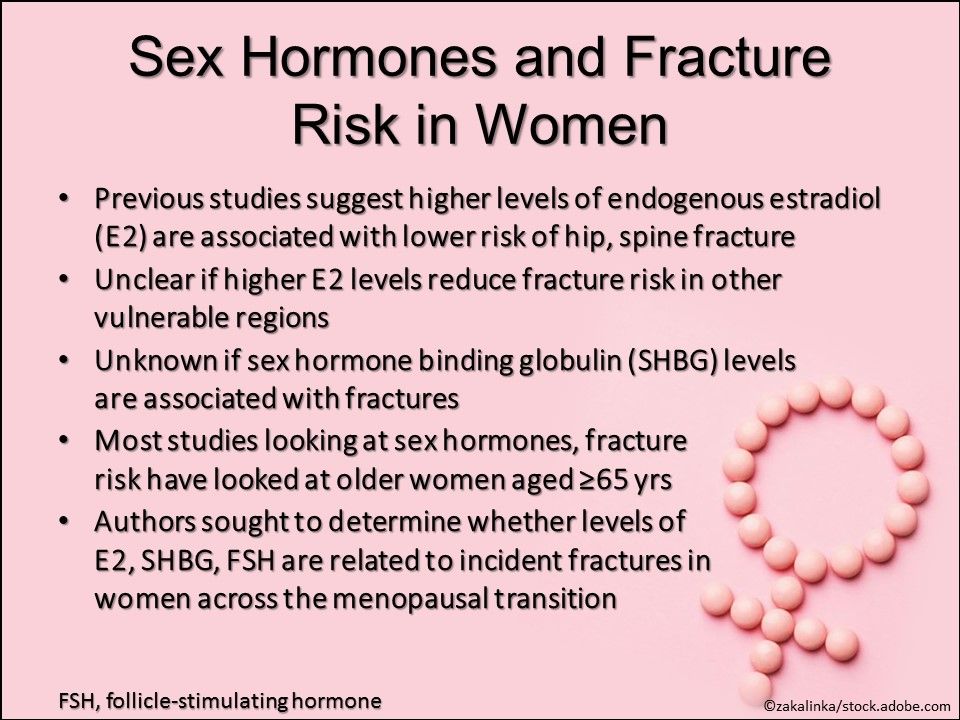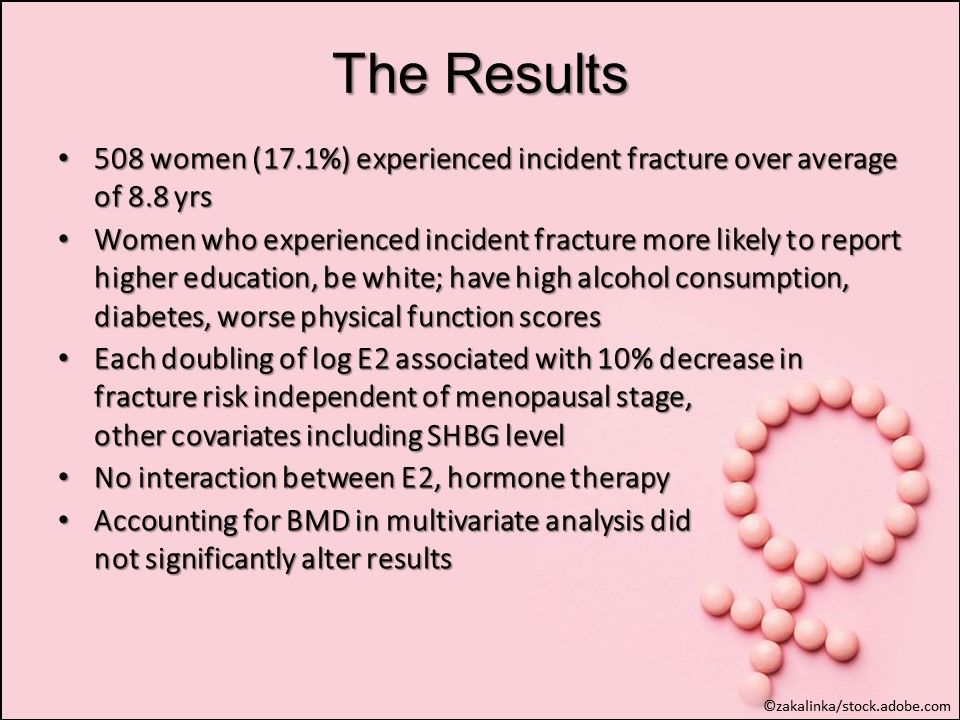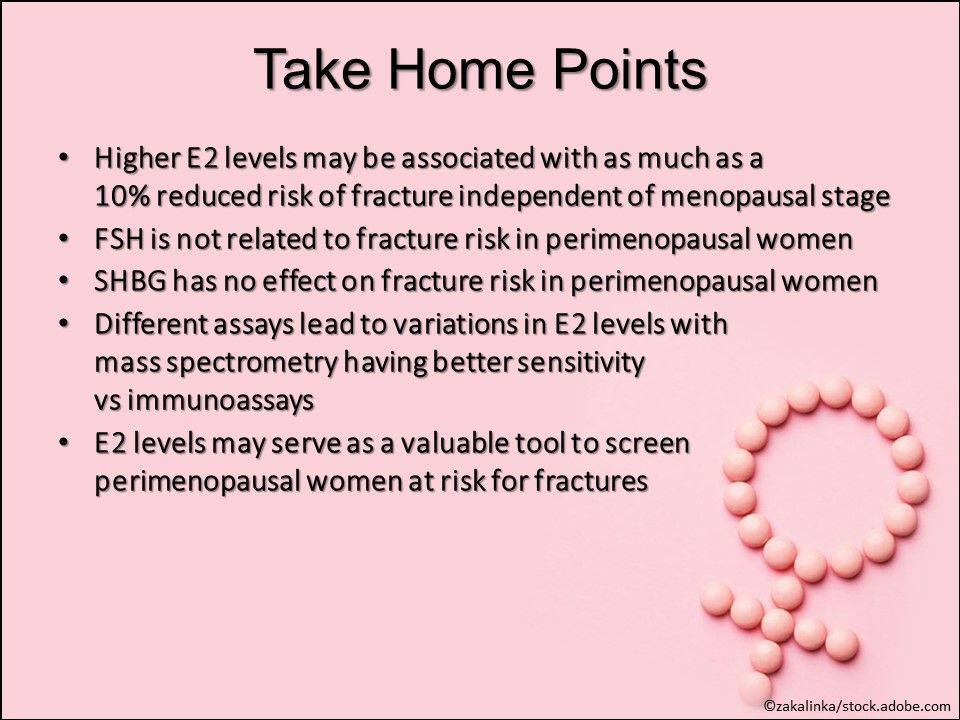© 2025 MJH Life Sciences™ , Patient Care Online – Primary Care News and Clinical Resources. All rights reserved.
Estradiol Levels Predict Fracture Risk During the Menopausal Transition
Authors of a new study found that estradiol levels can be used to predict fracture risk among women during the menopausal transition.

Researchers led by Jane Cauley, DrPH, professor of epidemiology at the University of Pittsburgh in Pennsylvania have discovered a link between lower total estradiol and fracture risk over the menopausal transition. Their results were published in the January 2019 issue of The Journal of Clinical Endocrinology & Metabolism. Click through the slides above for details on their study and take home points for clinical practice.
Image: ©zakalinka/stock.adobe.com

Sex Hormones and Fracture Risk in Women. Previous studies suggest higher levels of E2 are associated with a lower risk of hip and spine fracture, however, it is unclear if higher E2 levels reduce fracture risk in other vulnerable regions or if SHBG levels are associated with fractures. Authors sought to determine whether levels of E2, SHBG, and follicle-stimulating hormone (FSH) are related to incident fractures in women across the menopausal transition.

The Study. Authors looked at 2960 women, average age 46.4 ± 2.7 years, from the Women's Health across the Nation study who had at least 2 hormone measures before fracture. The association between hormones, fractures, and bone mineral density (BMD) were determined in women with BMD measurements. Fasting blood samples were used to determine E2 concentrations and SHBG and FSH levels were also measured. Menopausal stage was determined for each patient at follow-up and fractures were self-reported.

The Results. A total of 508 women (17.1%) experienced incident fracture over an average of 8.8 years and were more likely to report higher education, be white, and have high alcohol consumption, diabetes, and worse physical function scores. Each doubling of log E2 was associated with a 10% decrease in fracture risk independent of menopausal stage and other covariates including SHBG level. There was no interaction between E2 and hormone therapy and accounting for BMD in multivariate analysis did not significantly alter the results.

Take Home Points. Higher E2 levels may be associated with as much as a 10% reduced risk of fracture independent of menopausal stage. FSH is not related to fracture risk and SHBG has no effect on fracture risk in perimenopausal women. Different assays led to variations in E2 levels with mass spectrometry having better sensitivity vs immunoassays. E2 levels may serve as a valuable tool to screen perimenopausal women at risk for fractures.

Perspective. "As life expectancy increases and healthcare costs steadily rise, studies like this play an important role in the effort to find low cost, minimally invasive screening tools that may help prevent costly and debilitating fractures in women as they age. Further research is needed to determine the best assay for E2 levels and to define E2 threshold values.”
Reference: Cauley JA, Ruppert K, Lian Y, et al. Serum sex hormones and the risk of fracture across the enopausal transition: Study of women's health across the nation [published ahead of print January 23, 2019]. J Clin Endocrinol Metab. doi: 10.1210/jc.2018-02047.



